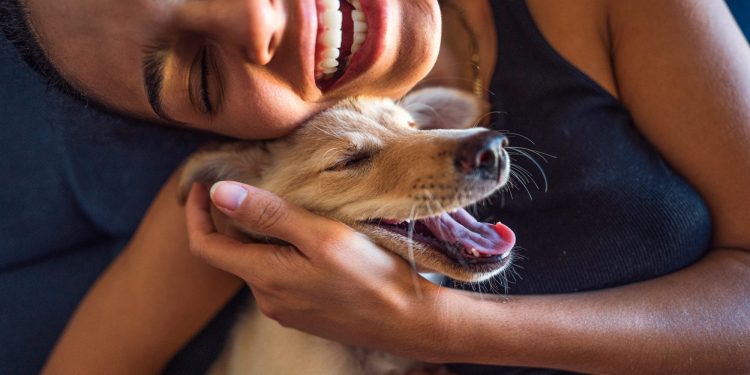When reunited with their owner after a long period of time, dogs are more likely to shed tears than when interacting with a stranger.
Whether you were away on vacation or simply at work all day, few things compare to the warm welcome home pet owners receive from their furry friends. And while the unbridled affection may make your eyes well up, did you know it may also make your dog’s eyes fill with tears, too? According to new research published in the journal Current Biology, your pup may shed a few tears of joy when he sees you after a prolonged period of time.
This is the first time research has linked dog tears to emotion; prior to the study, it was believed that water only formed in their tear ducts to keep their eyes clean. The inspiration for the research came from Takefumi Kikusui, a professor at the Laboratory of Human-Animal Interaction and Reciprocity at Ababa University in Japan, who decided to investigate tears in dogs after seeing one of his poodles get misty eyed while she nursed her puppies.
The moment with his own pup gave Kikusui the idea that oxytocin, which is known as the maternal or love hormone, increases tears in dogs. To better understand his theory, the research team used a standard test to measure 20 dogs’ tear volume before and after reuniting a loved one. They found that the volume increased when each dog was reunited with their owner as opposed to a person they didn’t know.
To further examine the link between a pup’s tears and emotion, researchers added oxytocin to the dogs’ eyes and found that their tear volume increased. Additionally, the team asked people to rate pictures of dogs’ faces with and without artificial tears in them. They found that the participants gave a more positive response to dogs who appeared teary eyed. Ultimately, the scientists believe that the production of tears in pups forge stronger connections between people and their pets.
“We had never heard of the discovery that animals shed tears in joyful situations, such as reuniting with their owners, and we were all excited that this would be a world first,” said Kikusui in a press release. Though more research is needed—scientists still don’t know if negative emotions produce dog tears, too—the team is confident that the connection shows the impact of the dog-human bond. “Dogs have become a partner of humans, and we can form bonds,” Kikusui said, noting that these tears also indicate the depth of that relationship. “In this process, it is possible that the dogs that show teary eyes during interaction with the owner would be cared for by the owner more.”




















